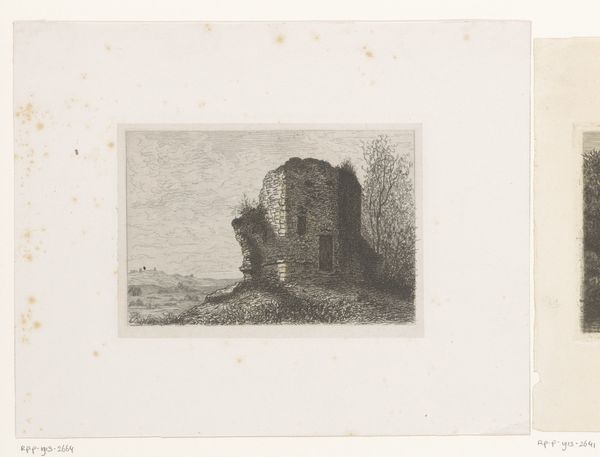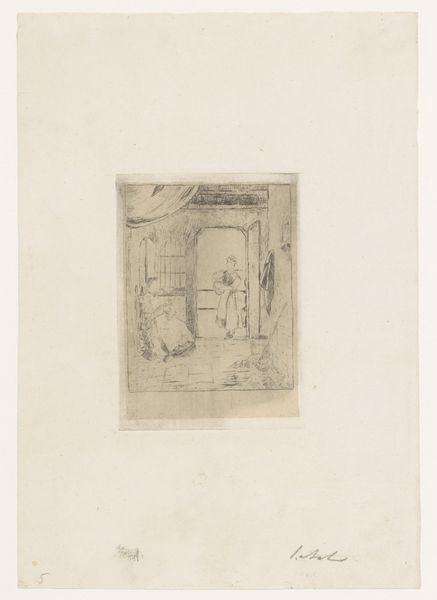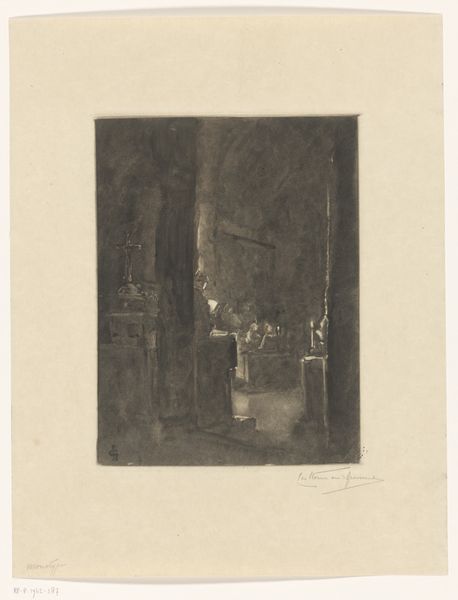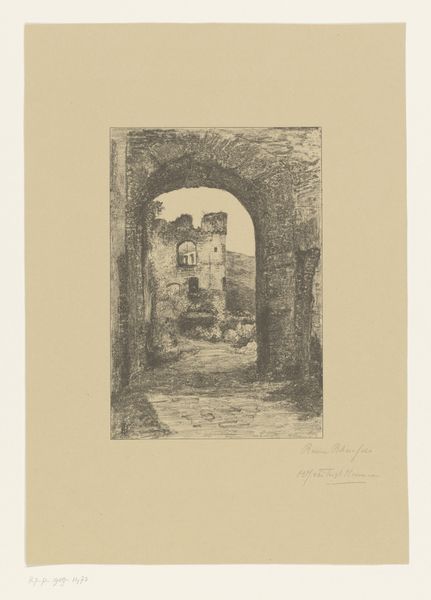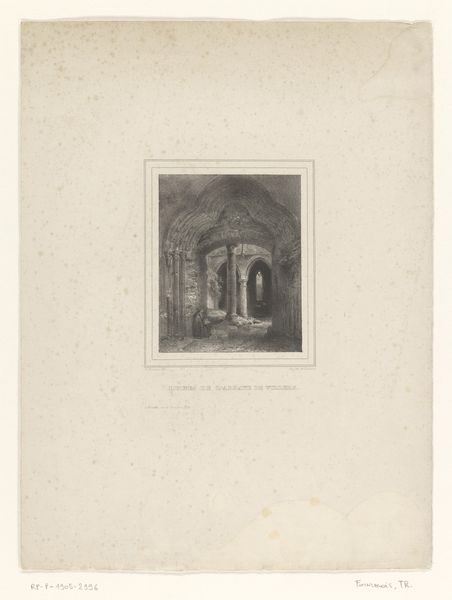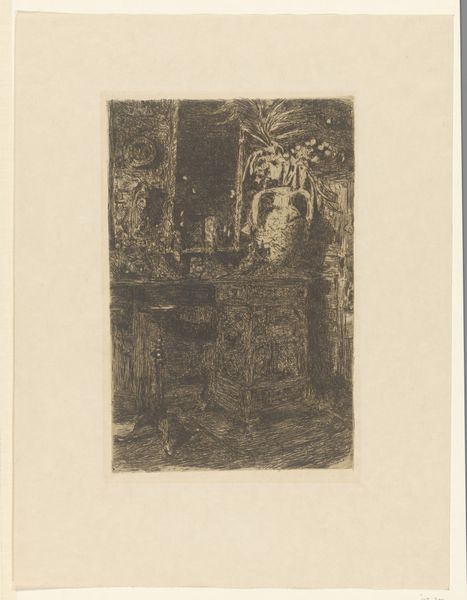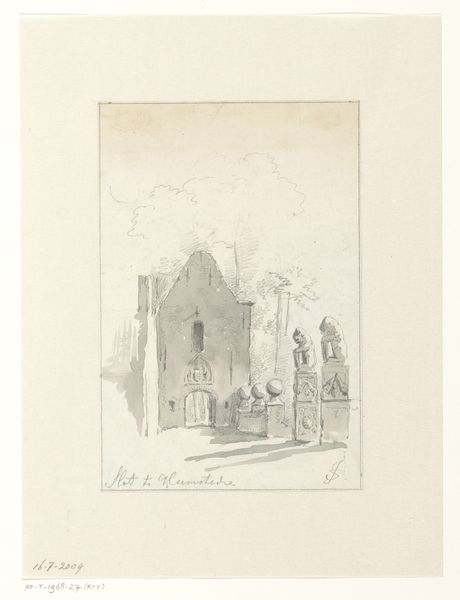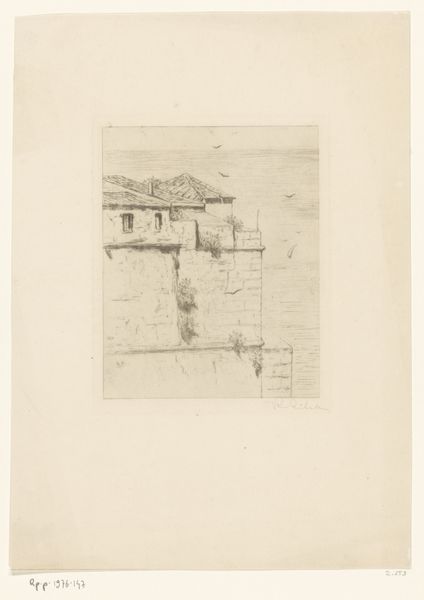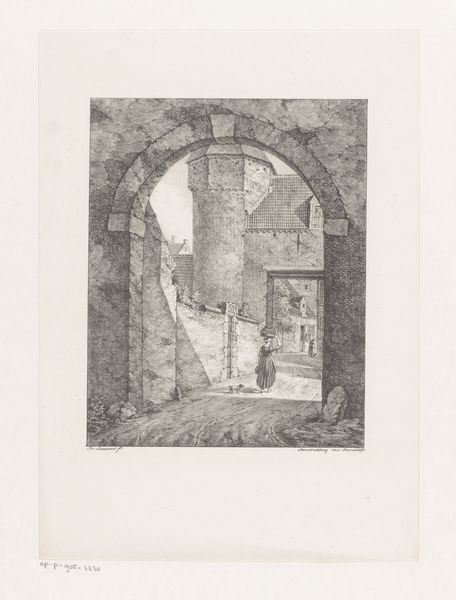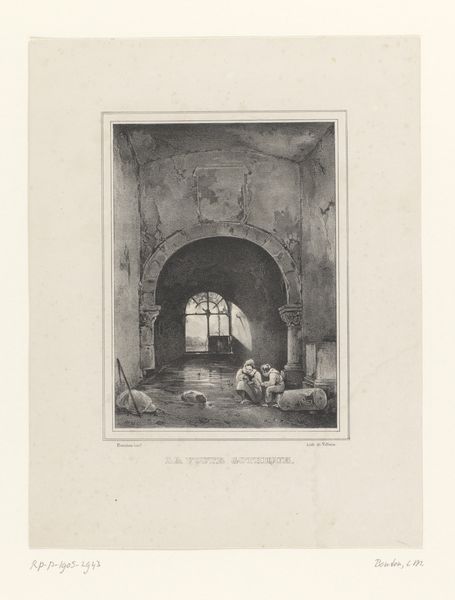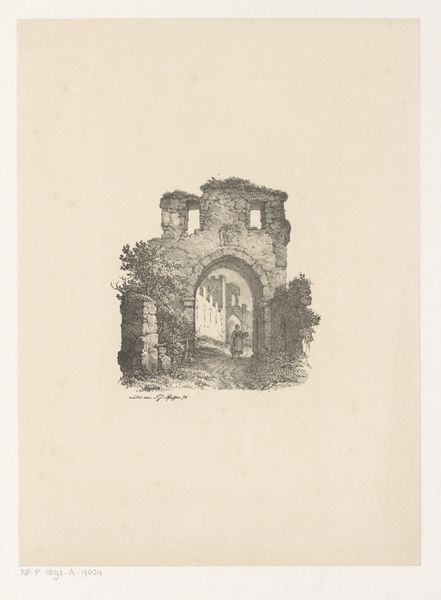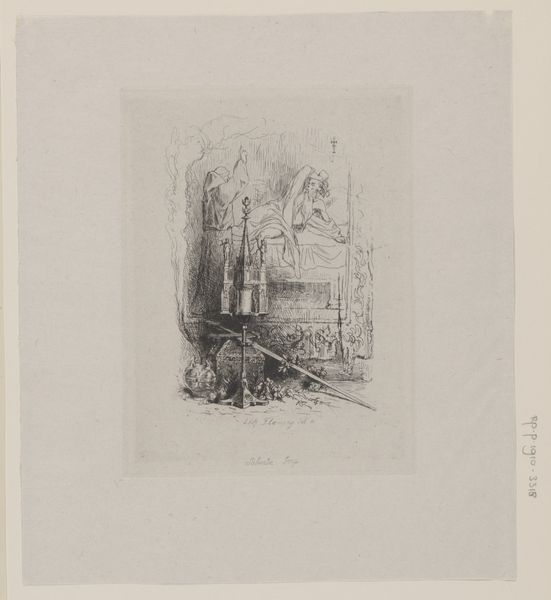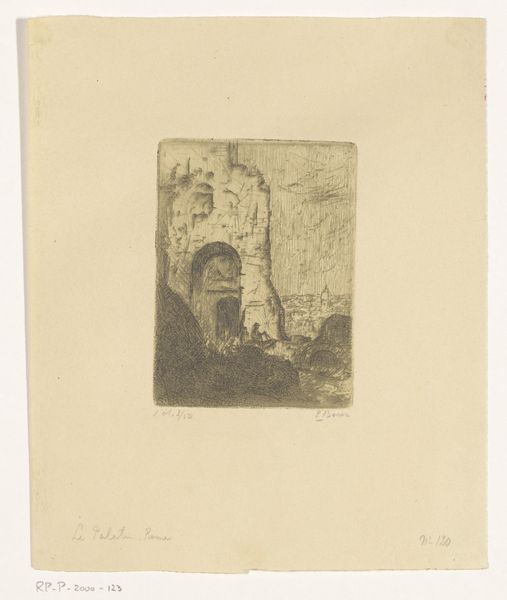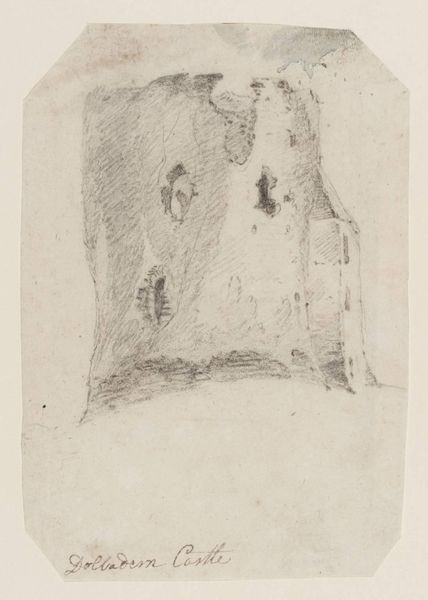
Dimensions: height 222 mm, width 179 mm
Copyright: Rijks Museum: Open Domain
Jan Striening's drawing captures the Brederode ruin, its skeletal remains standing against time. The archway, a dominant motif, speaks volumes. Historically, the arch has symbolized transitions, passages from one state to another. Think of triumphal arches celebrating victory, or the archways of cathedrals beckoning the faithful into sacred spaces. Here, in ruin, the arch becomes a poignant symbol of time's relentless march and the ephemeral nature of human achievement. We see echoes of this in Piranesi's etchings of Roman ruins, where arches frame fragmented memories of a glorious past. The crumbling stones are not merely structural elements; they evoke a melancholic reflection on history and the transience of power. It’s a testament to the enduring power of the image. The ruin engages our collective memory, stirring a subconscious awareness of mortality and the cyclical patterns of rise and fall. Striening's ruin thus becomes more than a mere depiction; it is a powerful emotional experience, resonating with the viewer on a deeply personal level.
Comments
No comments
Be the first to comment and join the conversation on the ultimate creative platform.
